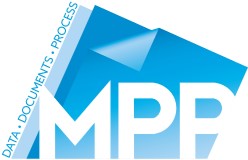As we visit prospective education sector clients, we regularly come across various iterations of ‘old school’ print contracts. The reference to old school is a pun; what we refer to are the old fashioned, expensive, punitive print contracts that were common place in the 90’s and early 2000’s.
If there is one sector that ‘got hit’ hardest by these sales techniques it is the education sector. It is not unusual to find schools saddled with ongoing finance on devices, alongside stinging (minimum volume) pence-per-page consumable and service contracts. To put this into perspective, these contracts could be based on estimates of 50,000+ prints per quarter, a figure you have to pay whether you hit that volume or not and can include the capital cost of the equipment, if not then there is usually a separate rental contract running alongside.
The reason that schools are paying such high charges is because they may have been mis-sold into the centralised Managed Print Service (MPS) proposition for supposed cost reduction purposes. The concept of centralised print, at that point in time, was not necessarily incorrect – as smaller desktop devices were expensive to run – however this is definitely not the case today. The issue is that many of these contracts, whilst designed to save the client money, actually only helped suppliers hide copious amounts of margin in the hardware and print charges. Furthermore, no one seems to have gone back to the schools and told them that things have changed and that the only people benefiting from the old approach were the device providers and support companies.
Not only has technology changed, but the demands in school have also changed significantly since then. Most schools now use smart boards, computers and iPads in classes which reduces the amount of paper required for lesson planning and delivery alone. Newsletters and parental communications also rely more on email than paper resulting in a further reduction in demand.
Technology costs now mean that it is much more time and cost efficient to have a device per classroom, even more so than centralisation ever offered. Recent examples that we have delivered for our clients provide an all-inclusive price (hardware, consumables and support) for significantly less than their current service and consumable spend – and with no hidden extras! On top of the cost benefits of ‘in class’ printing, the idea of decentralising also has many practical benefits. Nurseries and Key Stage 1 classes tend to use photos and pictures to show child development and so access to immediate printing allows teachers to keep records up to date.
The explosion in wireless and mobile devices also means pupils and teachers alike need ready access to printers as more and more content is produced not in books, but on tablets, phones and laptops – in short the idea of leaving the classroom and walking to a centralised print area like the staff room or office is no longer a practical expectation.
With mounting pressure on schools to balance the books whilst achieving outstanding outcomes, the cost of print is once again becoming a major issue. And it’s time that things changed to ensure that schools can use their squeezed budgets to be cost effective, efficient and modern when it comes to print.
